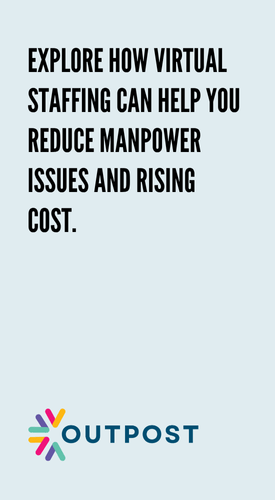It only takes one missed call for a patient to choose another clinic.
Every clinic is expected to be responsive. But keeping up with phones, bookings, cancellations, and billing questions—on top of running appointments—pulls your team in too many directions. A receptionist helps. But in Singapore, hiring a reliable one full-time isn’t cheap.
That’s why more clinics are exploring what a virtual medical receptionist in Singapore can offer: someone remote, trained in healthcare admin, and ready to handle front desk work without taking up space or straining your payroll.
Let’s walk through the real pros, cons, and cost differences—plus what others in the field are already saying about the shift.
What Is a Virtual Medical Receptionist?
A virtual medical receptionist is a trained professional who handles your clinic’s admin tasks remotely. They answer calls, schedule appointments, help with patient check-ins, and deal with common front desk duties—without needing to be physically at your clinic.
Some work full-time. Some cover mornings, evenings, or just telehealth days. The setup is flexible. The goal is simple: take work off your plate, so your team can focus on patients.
The Pros of Hiring a Virtual Medical Receptionist
1. You Save Money
Hiring a receptionist in Singapore can cost upwards of SGD $2,500/month, not including CPF, bonuses, or paid leave. By comparison, a virtual medical receptionist can cost around SGD $1,200 to $2,000/month, or less if you only need part-time hours.
“They hire a virtual medical receptionist to help their in-house staff with calls, scheduling, check-ins, billing… It’s a practical way to reduce workloads.”
– u/Hulyana_maya20
For many practices, the lower cost alone makes the idea worth exploring—especially if you’re just starting out or running lean.
2. You Get After-Hours Coverage Without Overtime Pay
Most patients don’t call during your office hours. They call at night. On weekends. Right after they remember something while scrolling on their couch.
A virtual receptionist can work outside the usual 9 to 6 window—without you needing to pay OT or manage rotating shifts.
“Our telehealth department has a whole remote team. Some take intakes over phone or webcam across clinics.”
– u/chevroletchaser
This is especially useful if you run a telemedicine arm or serve busy working adults. It keeps your clinic available, even when the doors are closed.
3. Your Team Stops Drowning in Admin
When things get busy, admin tasks fall on your nurses, doctors, or whoever is nearby. That means more errors, slower response times, and frustrated staff.
A virtual receptionist steps in to:
- Confirm appointments
- Chase no-shows
- Handle patient questions
- Coordinate referrals or medication follow-ups
- Manage recurring call-backs
“Our clinics recently added virtual medical receptionist roles. They help with scheduling, explain lab work, and manage telemed check-ins. I think this will keep growing.”
– u/Smooth_Meet7970
This isn’t just about saving money. It’s about helping your team work better.
4. You Can Scale Support Up or Down Easily
Need someone for three hours in the morning and again during lunch rush? You can do that. Most virtual receptionist setups are flexible and hour-based.
That’s a win for:
- Solo GPs
- Clinics trying out new hours or services
- Teams that don’t need full-time help but still need consistency
You won’t need to go through hiring cycles every time your schedule shifts.
Many clinics working with structured support providers like Outpost start with just a few hours a day, gradually expanding coverage once they see how smoothly it fits into their workflow.

The Cons of Hiring a Virtual Medical Receptionist
There are things to watch out for. But most of them come down to setup and expectations—not the role itself.
1. Trust Takes Time to Build
You’re not just handing someone a to-do list. You’re giving access to schedules, patient info, and potentially billing tasks. That takes trust—and it doesn’t happen overnight.
One Redditor offered this:
“There’s still some level of not trusting us… maybe because we don’t have degrees. That’s the only thing I can think of.”
– u/Own_Passenger_4529
Start with low-risk tasks. Build a feedback loop. Set boundaries. And make sure you’re not expecting full ownership on week one.
2. You Still Need to Set Things Up Right
A virtual receptionist won’t solve problems if your systems are messy. You’ll need:
- A working calendar or EHR platform
- Clear SOPs (even just in Google Docs)
- A shared folder or project board
- Secure login tools like LastPass or Bitwarden
- Call routing via VoIP or your booking system
Once that’s in place, the onboarding gets smoother. But the effort has to come first.
3. Some Providers Overpromise and Underdeliver
There’s a difference between a trained healthcare admin and someone who’s just good at phone work. One clinic owner had this to say:
“They said they’d find good talent. But the person didn’t perform. I stopped after a month—then got hit with a $12,000 lawsuit for breaking contract.”
– u/akatz50
Avoid long-term lock-ins. Always test with a short-term or hourly plan. And ask for clear replacement policies before signing anything.
How the Costs Stack Up
Here’s a side-by-side look at what you’re really paying for:
| In-Clinic Receptionist | Virtual Medical Receptionist | |
|---|---|---|
| Base Monthly Cost | SGD $2,200 – $3,500 | SGD $1,200 – $2,000 |
| CPF, Bonuses, Leave | Yes | Usually included in rate |
| Office Space & Setup | Required | Not needed |
| Flexibility (Shifts, Coverage) | Fixed hours | Fully customisable |
| Exit Terms | 3–6 month notice typical | Often month-to-month |
Some teams working with Outpost have reported hitting that lower price range without compromising on training or professionalism—especially when they’re open to part-time coverage or evening shifts.
Conclusion

A virtual medical receptionist isn’t about outsourcing care. It’s about protecting your time, helping your team stay focused, and keeping the experience seamless for the people who trust you.
The support is out there. What matters is choosing the setup that fits your clinic, building a system that works, and letting the right person do their job—so you can do yours.




